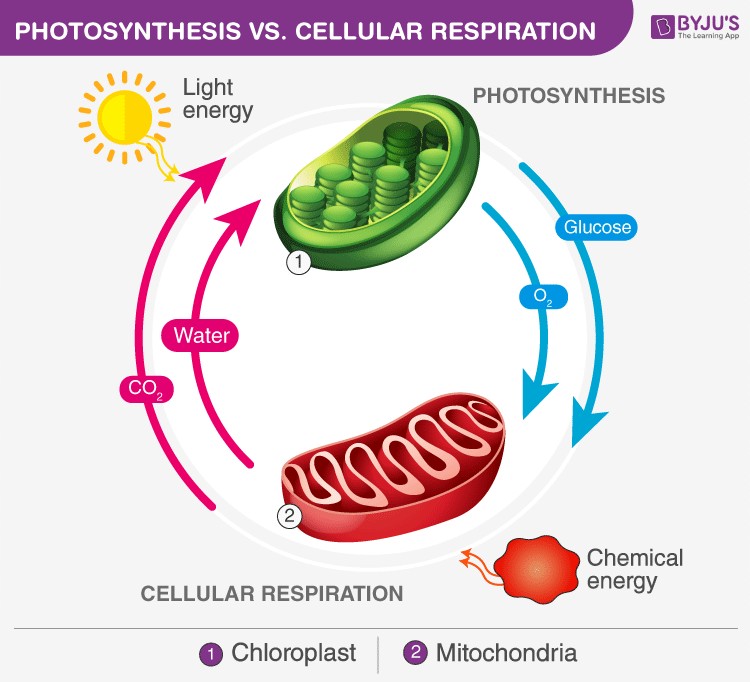Plants release oxygen as a byproduct of photosynthesis, a process vital for life on Earth. We, in turn, breathe in this oxygen to fuel cellular respiration, a process that generates the energy our cells need to function. Photosynthesis and cellular respiration are fundamental biological processes that, while distinct, are intricately linked and complementary. Often described as reverse reactions, they are essential for maintaining the balance of life.
Decoding Photosynthesis
Photosynthesis is the remarkable process by which phototrophs, including green plants, algae, and some bacteria, convert light energy into chemical energy in the form of glucose. This process is anabolic, meaning it builds complex molecules from simpler ones. Occurring within chloroplasts, organelles specific to plant cells, photosynthesis utilizes carbon dioxide, water, and sunlight as reactants. The magic happens in two main stages: the light-dependent reactions and the light-independent reactions (Calvin cycle). Water is oxidized and light energy is captured to produce ATP and NADPH, which are then used to convert carbon dioxide into glucose in the Calvin cycle. Oxygen is released as a crucial byproduct.
Understanding Cellular Respiration
Cellular respiration, on the other hand, is a catabolic process, breaking down complex glucose molecules to release energy in the form of ATP (adenosine triphosphate). This energy is essential for powering various cellular activities in all living organisms, from plants to animals. Cellular respiration primarily takes place in the mitochondria. It utilizes glucose and oxygen as reactants, yielding carbon dioxide, water, and ATP as products. This process involves a series of metabolic pathways, including glycolysis, the Krebs cycle, and the electron transport chain.
Photosynthesis vs. Cellular Respiration: A Venn Diagram Perspective
To clearly understand the relationship between photosynthesis and cellular respiration, a Venn diagram is an incredibly helpful tool. Imagine two overlapping circles. One circle represents Photosynthesis, and the other represents Cellular Respiration. The overlapping section in the middle highlights their similarities, while the non-overlapping sections showcase their unique differences.
Similarities: The Overlapping Section
- Energy Conversion: Both processes are fundamentally about energy conversion. Photosynthesis converts light energy to chemical energy (glucose), while cellular respiration converts chemical energy (glucose) back into usable energy (ATP).
- Essential Life Processes: Both are crucial for life as we know it. Photosynthesis produces the oxygen we breathe and the glucose that fuels ecosystems. Cellular respiration utilizes this oxygen and glucose to power life functions.
- Involve Electron Transport Chains: Both processes utilize electron transport chains to generate energy carriers (ATP in respiration, ATP and NADPH in photosynthesis).
- Cyclical Relationship: They are part of a larger cycle. The products of one process are the reactants of the other, creating a beautiful balance in nature.
Differences: The Distinct Circles
Photosynthesis (Left Circle):
- Primary Goal: To produce glucose (food) and store energy.
- Energy Input: Requires light energy (endothermic reaction).
- Location: Chloroplasts in phototrophs.
- Reactants: Carbon dioxide, water, and sunlight.
- Products: Glucose and oxygen.
- Process Type: Anabolic (building up).
- Oxygen: Produced and released.
- Carbon Dioxide: Taken in and used.
- Occurs in: Phototrophs (plants, algae, some bacteria).
- Light Dependency: Requires sunlight.
- Chemical Equation: 6CO2 + 6H2O + Light Energy → C6H12O6 + 6O2
Cellular Respiration (Right Circle):
- Primary Goal: To break down glucose and release energy (ATP).
- Energy Output: Releases energy (exergonic reaction).
- Location: Mitochondria in all living organisms.
- Reactants: Glucose and oxygen.
- Products: Carbon dioxide, water, and ATP.
- Process Type: Catabolic (breaking down).
- Oxygen: Consumed and used.
- Carbon Dioxide: Released as a byproduct.
- Occurs in: All living organisms (plants, animals, fungi, bacteria).
- Light Dependency: Does not require sunlight; occurs constantly.
- Chemical Equation: C6H12O6 + 6O2 → 6CO2 + 6H2O + ATP
 Diagram illustrating the differences between photosynthesis and cellular respiration.
Diagram illustrating the differences between photosynthesis and cellular respiration.
In essence, photosynthesis harnesses light energy to create glucose and oxygen, while cellular respiration utilizes glucose and oxygen to produce energy for life, releasing carbon dioxide and water. They are two sides of the same coin, ensuring the continuous flow of energy and matter in ecosystems. Understanding their similarities and differences, as highlighted by the Venn diagram concept, is crucial for grasping the fundamental principles of biology and the interconnectedness of life on Earth.

